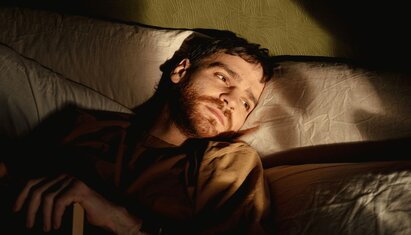Exposure therapy psychoeducation

Published August 13, 2025

If you’re a therapist looking for a CBT triangle for kids to help them understand their thoughts, feelings, and actions, these free CBT worksheets for kids can be helpful.
Cognitive behavioral therapy (CBT) is one of the most widely used interventions that therapists use to treat a broad range of mental health issues, and CBT worksheets for kids can be helpful tools for younger clients.
This guide provides an overview of the CBT triangle for kids, how to use CBT in your practice, and includes a free CBT worksheet for kids to save to your electronic health record (EHR) and use in your practice.
Cognitive behavioral therapy is an evidence-based intervention used for a wide range of clients, including children and adolescents. It’s effective at treating multiple mental health conditions, from anxiety to behavioral problems.
The CBT triangle, also known as the cognitive triangle, depicts the central concept of cognitive behavioral therapy: the connection between our thoughts, feelings, and actions or behaviors.
Specifically, the CBT triangle for kids illustrates the following:
Understanding the relationship between thoughts, feelings, and behaviors helps individuals modify negative thoughts into more adaptive thoughts and behaviors, leading to a positive impact on their emotions and overall well-being.
When working with children, clinicians may adapt the cognitive triangle for kids, depending on their age.
Examples of different types of CBT worksheets for kids that may be helpful include:
Instead of using a thoughts, actions, and feelings circle worksheet, therapists might use a worksheet with pictures of people and thought bubbles.
These illustrations can help children understand their thoughts by asking prompts like “What are you saying to yourself?” or “What is your brain saying?”
Clinicians might also use images of people involved in different scenarios to help children learn how thoughts, feelings, and actions may change. Alternatively, shapes and arrows can help describe how thoughts influence feelings and behaviors.
For school-aged children and older, therapists can use a CBT triangle for kids worksheet to describe the interrelationship between thoughts, feelings, and behaviors.
Clinicians could also use a book and ask the child to identify unhelpful thoughts in the story and think of more helpful ones. Kids may then describe how those thoughts impact their feelings.
These anxiety worksheets for kids help children understand anxiety, identify anxiety triggers and unhelpful thoughts, and reduce their worry.
CBT interventions for youth-aged children may involve using a catch it, check it, and change it worksheet.
This three-step process helps to cognitively restructure unhelpful thoughts:
You’ll find some CBT triangle examples in our printable thoughts, feelings, behavior worksheet that you can download for free at the top of this article.
Therapists may find it helpful to use the CBT triangle for kids worksheet in the following ways:
SimplePractice is HIPAA-compliant practice management software with everything you need to run your practice built into the platform—from booking and scheduling to insurance and client billing.
If you’ve been considering switching to an EHR system, SimplePractice empowers you to run a fully paperless practice—so you get more time for the things that matter most to you.
Try SimplePractice free for 30 days. No credit card required.
Proudly made in Santa Monica, CA © 2025 SimplePractice, LLC
Proudly made in Santa Monica, CA © 2025
SimplePractice, LLC